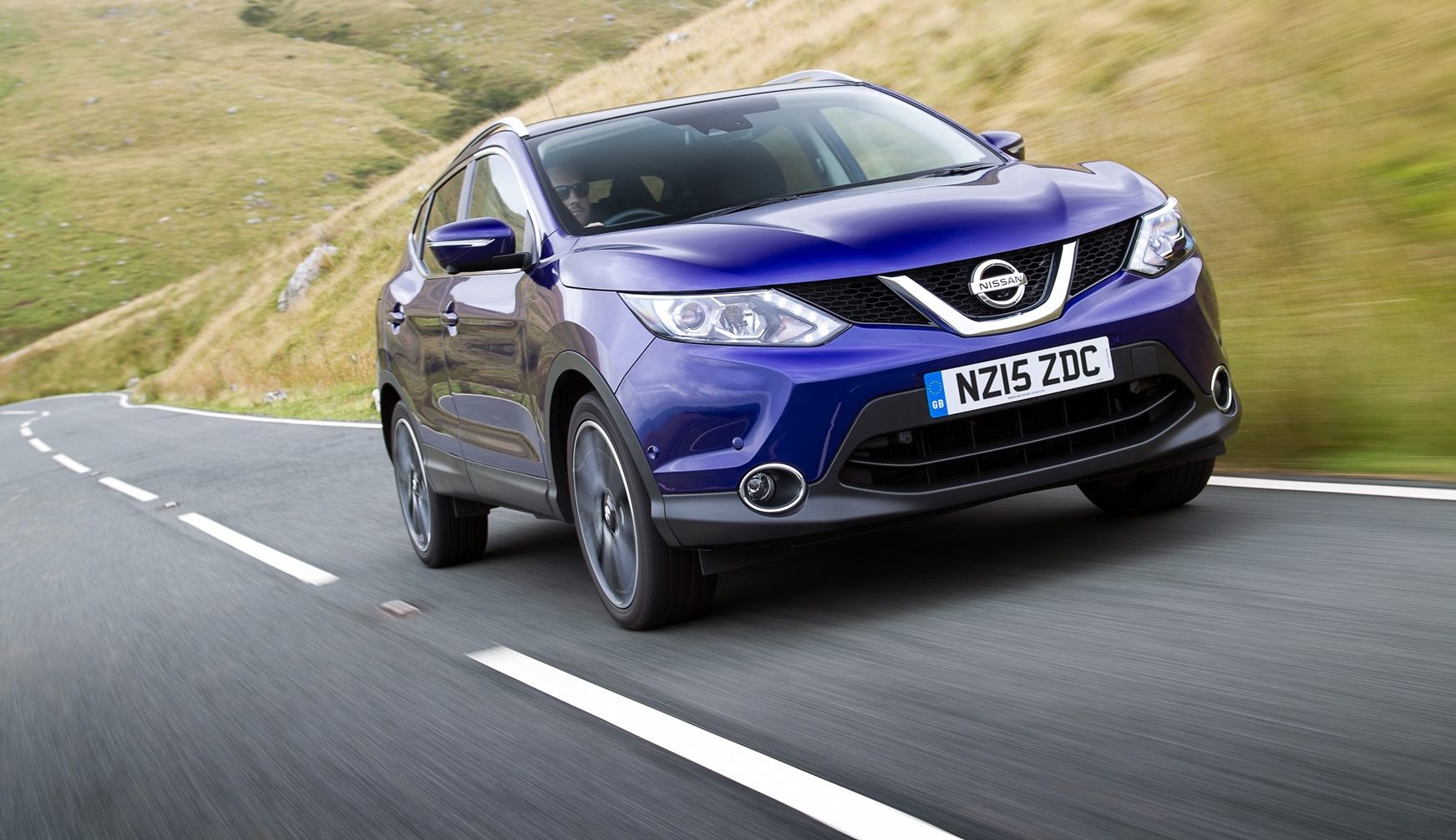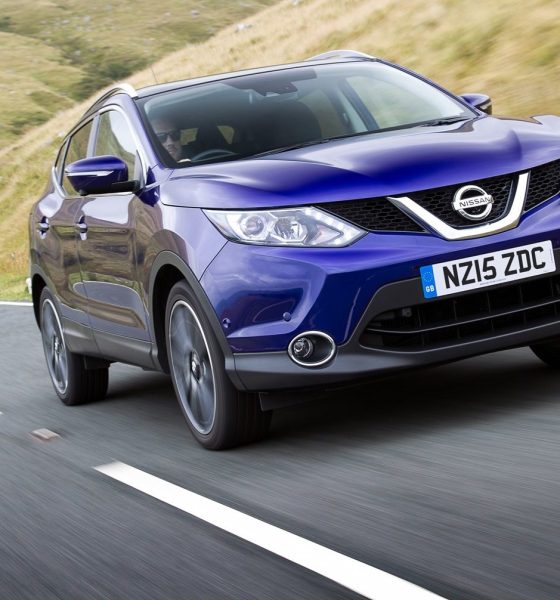

News
Nissan entangled in falsified emissions and fuel economy data scandal in Japan plants
Nissan Motor has admitted that an internal review has revealed falsified emissions testing data in most of its factories in Japan. The Asian country’s third-largest carmaker has not announced how many of its vehicles were involved in the controversy, though the company stated that inspectors used “altered measurement values” on emissions inspection reports.
In a statement on Monday, Nissan noted that the tests conducted on its vehicles “deviated from the prescribed testing environment.” Nissan, however, believes that all of its car models except the Nissan GT-R — the company’s flagship sports car — complied with safety standards in Japan. Nissan’s statement further noted that the falsification problems did not affect fuel-economy findings.
Nissan has assured the public and its investors that investigations are now underway. The carmaker also stated that it had retained Nishimura & Asahi, a prominent Japanese law firm, to lead the investigation. Nevertheless, Nissan’s disclosure comes as the latest blow to the Japanese carmaker. Last October, after all, Nissan was faced with controversy after it was forced to stop the operations in its Japanese factories and recall 1.2 million of its cars after it was revealed that vehicle inspections in its facilities had been conducted by uncertified technicians.
For now, Nissan’s current emissions problems are still a far cry from the scope of Volkswagen’s Dieselgate scandal, which resulted in a $25 billion fine to the German legacy carmaker. Nissan’s current emissions issues, if any, seem to be caused by the company’s mismanagement of its facilities and its workforce. Based on what Nissan has revealed so far, it appears that the company’s falsified emissions data were at least not the results of a deliberate effort.
Volkswagen, on the other hand, admitted to intentionally writing software to cheat emissions tests. From 2006 to September 2015, Volkswagen promoted its cars in the United States as “Clean Diesel” vehicles. Over that time, about 580,000 sedans, SUVs, and crossovers were sold by Volkswagen in the US under its flagship VW badge, as well as under its Audi, and Porsche brands. As the scandal broke, however, it was revealed that the exhaust control equipment in Volkswagen’s diesel vehicles was programmed to shut off as soon as the cars were off regulators’ tests.
Volkswagen initially attempted to shift the blame on a group of rogue engineers for Dieselgate, before quietly backing away from the claim. On December 2017, Volkswagen engineer Oliver Schmidt was sentenced to 7 years in prison on a Detroit court for his part in the scandal. Earlier this year, the United States Justice Department also indicted former Volkswagen chief executive Martin Winterkorn on four felony charges.
While Nissan could be sitting on what could be a scandal that could be the biggest in its history, the Japanese carmaker is a least handling its ongoing problems a lot better than Volkswagen. If Nissan could nip its emissions scandal at this point, it could at least rest assure that it merely made a sin of inadvertent omission — significantly different than its German counterpart’s sin of deliberate commission.

Elon Musk
Elon Musk and Tesla AI Director share insights after empty driver seat Robotaxi rides
The executives’ unoccupied tests hint at the rapid progress of Tesla’s unsupervised Robotaxi efforts.

Tesla CEO Elon Musk and AI Director Ashok Elluswamy celebrated Christmas Eve by sharing personal experiences with Robotaxi vehicles that had no safety monitor or occupant in the driver’s seat. Musk described the system’s “perfect driving” around Austin, while Elluswamy posted video from the back seat, calling it “an amazing experience.”
The executives’ unoccupied tests hint at the rapid progress of Tesla’s unsupervised Robotaxi efforts.
Elon and Ashok’s firsthand Robotaxi insights
Prior to Musk and the Tesla AI Director’s posts, sightings of unmanned Teslas navigating public roads were widely shared on social media. One such vehicle was spotted in Austin, Texas, which Elon Musk acknowleged by stating that “Testing is underway with no occupants in the car.”
Based on his Christmas Eve post, Musk seemed to have tested an unmanned Tesla himself. “A Tesla with no safety monitor in the car and me sitting in the passenger seat took me all around Austin on Sunday with perfect driving,” Musk wrote in his post.
Elluswamy responded with a 2-minute video showing himself in the rear of an unmanned Tesla. The video featured the vehicle’s empty front seats, as well as its smooth handling through real-world traffic. He captioned his video with the words, “It’s an amazing experience!”
Towards Unsupervised operations
During an xAI Hackathon earlier this month, Elon Musk mentioned that Tesla owed be removing Safety Monitors from its Robotaxis in Austin in just three weeks. “Unsupervised is pretty much solved at this point. So there will be Tesla Robotaxis operating in Austin with no one in them. Not even anyone in the passenger seat in about three weeks,” he said. Musk echoed similar estimates at the 2025 Annual Shareholder Meeting and the Q3 2025 earnings call.
Considering the insights that were posted Musk and Elluswamy, it does appear that Tesla is working hard towards operating its Robotaxis with no safety monitors. This is quite impressive considering that the service was launched just earlier this year.
Elon Musk
Starlink passes 9 million active customers just weeks after hitting 8 million
The milestone highlights the accelerating growth of Starlink, which has now been adding over 20,000 new users per day.

SpaceX’s Starlink satellite internet service has continued its rapid global expansion, surpassing 9 million active customers just weeks after crossing the 8 million mark.
The milestone highlights the accelerating growth of Starlink, which has now been adding over 20,000 new users per day.
9 million customers
In a post on X, SpaceX stated that Starlink now serves over 9 million active users across 155 countries, territories, and markets. The company reached 8 million customers in early November, meaning it added roughly 1 million subscribers in under seven weeks, or about 21,275 new users on average per day.
“Starlink is connecting more than 9M active customers with high-speed internet across 155 countries, territories, and many other markets,” Starlink wrote in a post on its official X account. SpaceX President Gwynne Shotwell also celebrated the milestone on X. “A huge thank you to all of our customers and congrats to the Starlink team for such an incredible product,” she wrote.
That growth rate reflects both rising demand for broadband in underserved regions and Starlink’s expanding satellite constellation, which now includes more than 9,000 low-Earth-orbit satellites designed to deliver high-speed, low-latency internet worldwide.
Starlink’s momentum
Starlink’s momentum has been building up. SpaceX reported 4.6 million Starlink customers in December 2024, followed by 7 million by August 2025, and 8 million customers in November. Independent data also suggests Starlink usage is rising sharply, with Cloudflare reporting that global web traffic from Starlink users more than doubled in 2025, as noted in an Insider report.
Starlink’s momentum is increasingly tied to SpaceX’s broader financial outlook. Elon Musk has said the satellite network is “by far” the company’s largest revenue driver, and reports suggest SpaceX may be positioning itself for an initial public offering as soon as next year, with valuations estimated as high as $1.5 trillion. Musk has also suggested in the past that Starlink could have its own IPO in the future.
News
NVIDIA Director of Robotics: Tesla FSD v14 is the first AI to pass the “Physical Turing Test”
After testing FSD v14, Fan stated that his experience with FSD felt magical at first, but it soon started to feel like a routine.

NVIDIA Director of Robotics Jim Fan has praised Tesla’s Full Self-Driving (Supervised) v14 as the first AI to pass what he described as a “Physical Turing Test.”
After testing FSD v14, Fan stated that his experience with FSD felt magical at first, but it soon started to feel like a routine. And just like smartphones today, removing it now would “actively hurt.”
Jim Fan’s hands-on FSD v14 impressions
Fan, a leading researcher in embodied AI who is currently solving Physical AI at NVIDIA and spearheading the company’s Project GR00T initiative, noted that he actually was late to the Tesla game. He was, however, one of the first to try out FSD v14.
“I was very late to own a Tesla but among the earliest to try out FSD v14. It’s perhaps the first time I experience an AI that passes the Physical Turing Test: after a long day at work, you press a button, lay back, and couldn’t tell if a neural net or a human drove you home,” Fan wrote in a post on X.
Fan added: “Despite knowing exactly how robot learning works, I still find it magical watching the steering wheel turn by itself. First it feels surreal, next it becomes routine. Then, like the smartphone, taking it away actively hurts. This is how humanity gets rewired and glued to god-like technologies.”
The Physical Turing Test
The original Turing Test was conceived by Alan Turing in 1950, and it was aimed at determining if a machine could exhibit behavior that is equivalent to or indistinguishable from a human. By focusing on text-based conversations, the original Turing Test set a high bar for natural language processing and machine learning.
This test has been passed by today’s large language models. However, the capability to converse in a humanlike manner is a completely different challenge from performing real-world problem-solving or physical interactions. Thus, Fan introduced the Physical Turing Test, which challenges AI systems to demonstrate intelligence through physical actions.
Based on Fan’s comments, Tesla has demonstrated these intelligent physical actions with FSD v14. Elon Musk agreed with the NVIDIA executive, stating in a post on X that with FSD v14, “you can sense the sentience maturing.” Musk also praised Tesla AI, calling it the best “real-world AI” today.








